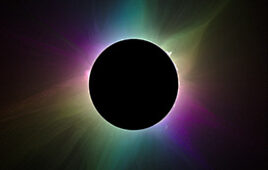Astronomers may have found a potentially habitable planet named Proxima b orbiting Proxima Centauri, the closest neighboring star next to our solar system.
An international team of astronomers made this discovery indirectly after using a number of telescopes to study the light emitted by the parent star, reported The New York Times.
A series of clocklike wobbles emerged within the starlight as the astronomers noted there were shifts in color going from red to blue. These oscillations were caused by Proxima b orbiting around the star.
The size of the wobbles helped the research team determine that Proxima b could potentially be 1.3 times the mass of Earth. Also, there could be a possibility that liquid water may exist on the planet’s surface because Proxima b resides in the “Goldilocks zone” of the star where it’s not too hot and not too cold either, explained the Times.
“Once we had established that the wobble wasn’t caused by star spots, we knew that that there must be a planet orbiting within a zone where water could exist, which is really exciting. If further research concludes that the conditions of its atmosphere are suitable to support life, this is arguably one of the most important scientific discoveries we will ever make,” said co-author of this study Open University Prof. John Barnes, Ph.D., in a statement.
Other details regarding this planet remain uncertain because direct observation of Proxima b isn’t possible with current telescope technology, wrote The Washington Post.
Ideas regarding the planet’s surface, though, were established based on other planets that have formed around red dwarf stars like Proxima Centauri too.
The team plans on making further observations regarding Proxima b using current instruments and the next generation of giant telescopes to determine if there really is other life out there.
Their findings are published in the journal Nature.




